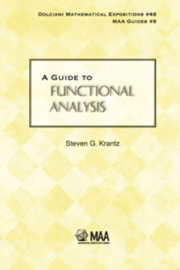Preface
Summary
Functional analysis is a child of the twentieth century. Rapid developments in the theory of differential equations and especially in harmonic analysis (the theory of Fourier series) made it desirable to study entire spaces of functions. These were usually infinite dimensional spaces, which revealed new worlds of harmony and truth. Functional analysis gave analysis a new set of techniques and an entirely new way of looking at things. It created the idea of ‘soft’ analysis (as opposed to ‘hard’ analysis). It often was able to prove in a few lines results that were hard work to verify by classical means.
Functional analysis is abstract mathematics at its best. It requires a good deal of the reader, and particularly of the end user. It is a demanding discipline, but one which yields many fruits.
Most graduate students are required to learn some functional analysis as part of the qualifying exam system. Working analysts have to have some functional analysis under their belts. It is part of our toolkit, just as Galois theory is for the algebraist.
The creators of functional analysis are also legend. Stefan Banach and Stanislaw Ulam, to name just two, were part of the Scottish Cafe team in pre-war Poland, and they helped to set a standard for how mathematics is practiced today. A bit later, John von Neumann played a critical role in establishing the importance of Hilbert space theory, both in mathematics and in physics. Some of the most important and powerful mathematicians today are functional analysts.
- Type
- Chapter
- Information
- A Guide to Functional Analysis , pp. xi - xiiPublisher: Mathematical Association of AmericaPrint publication year: 2013



